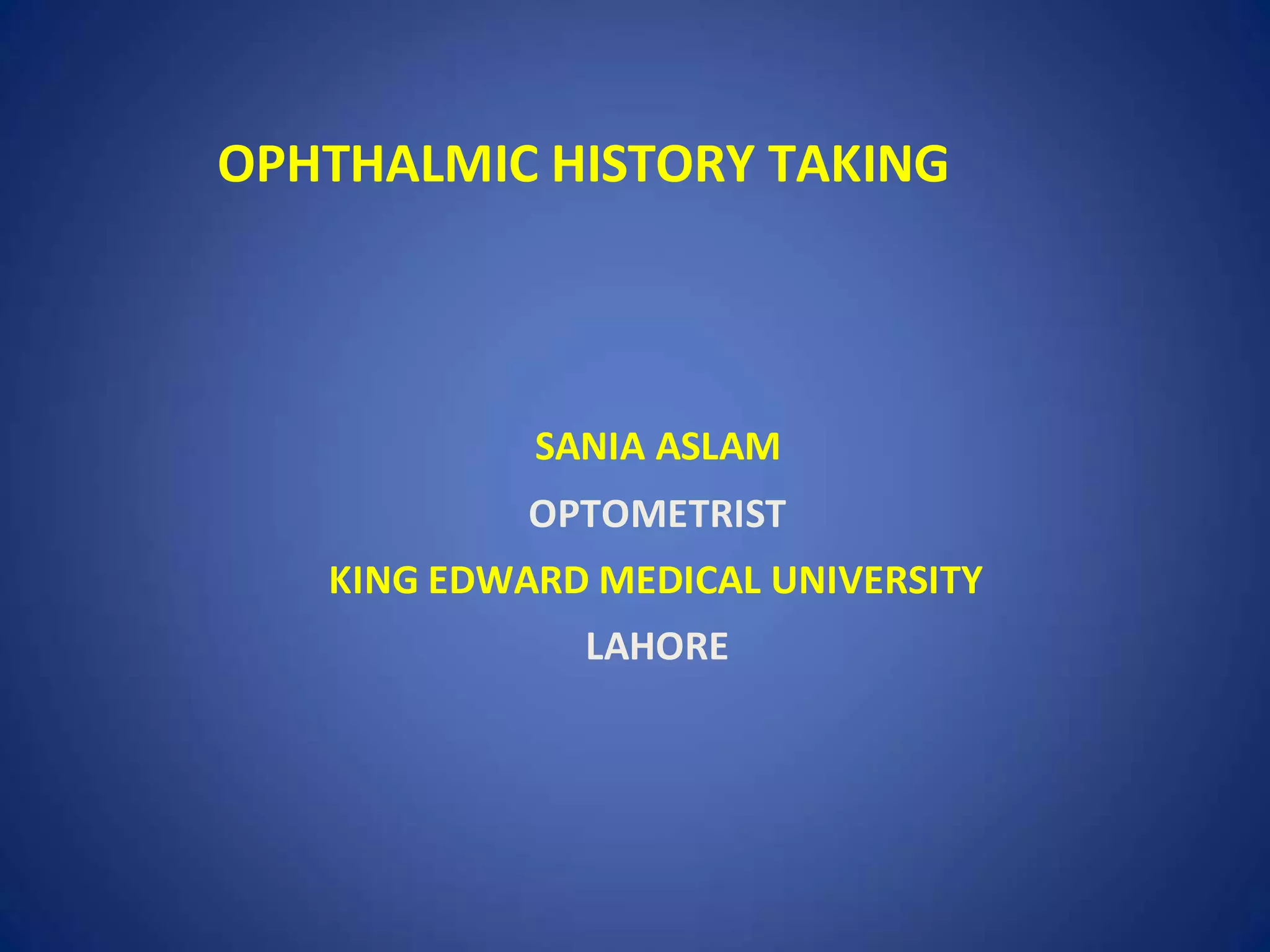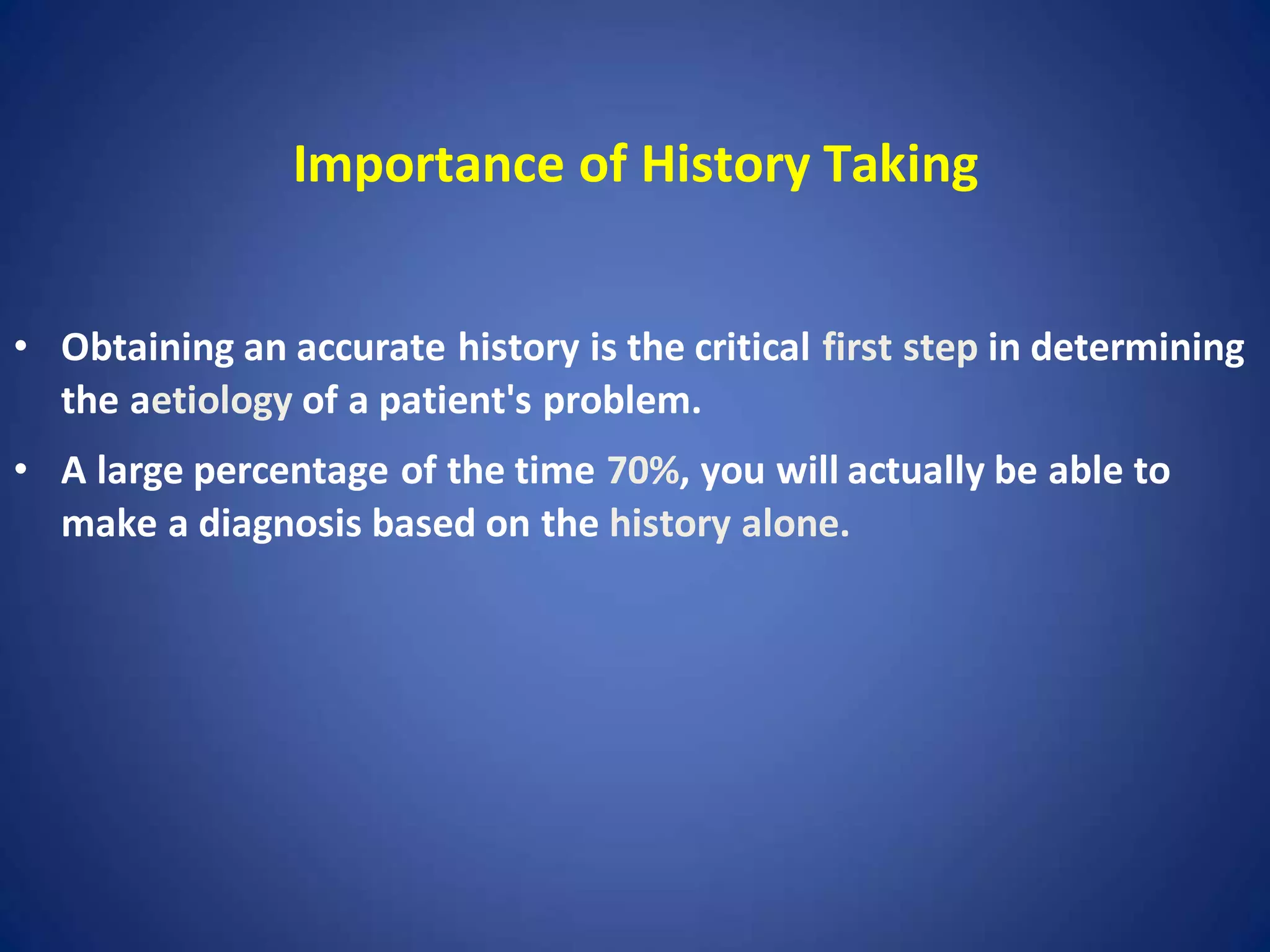The document outlines a comprehensive framework for ophthalmic history taking, detailing the importance of obtaining accurate patient history to diagnose issues. It covers various aspects of medical history, including chief complaints, past medical history, and social factors such as drug use and family history. Key techniques for effective patient interactions and documentation are also highlighted to ensure a thorough understanding of the patient's condition.




























